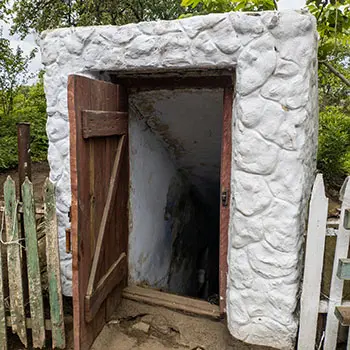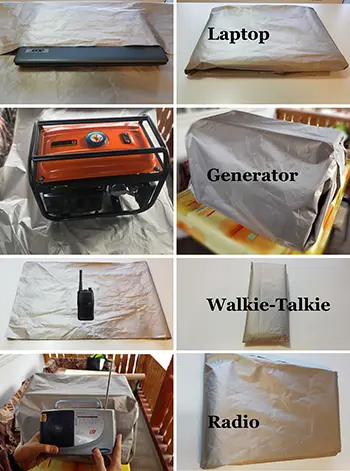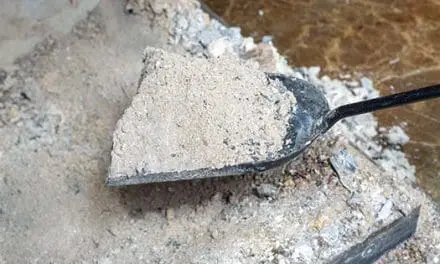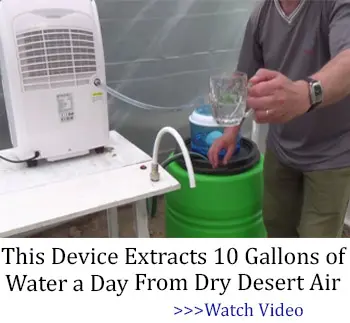A single electromagnetic pulse could wipe out our electronics in seconds and turn life upside down. That’s why it’s important to prepare for an EMP. You should have backup power and protect key devices. Also, know how to manage without modern technology.
During the February 2021 winter storm, 4.5 million homes across Texas lost power as extreme weather overwhelmed the grid
That failure led to widespread outages, fatal consequences, and over $195 billion in damages.
Now, imagine that catastrophe multiplied across the entire continent.
From smartphones to power stations, our modern infrastructure stands defenseless against this looming threat.
While 97% of people lack EMP protection, here’s a guide to place you in the prepared 3%:
Start with the Basics to Prepare for an EMP
When I say you need to prepare for an EMP I mean building a survival kit that covers different timeframes. The first 72 hours require specific tools, while the following weeks demand long-term solutions. Standard emergency kits fall short because they ignore the unique challenges of a powerless world.
Essential gear includes non-electronic water filters, manual food processing tools, and printed reference materials. The key is to choose items that work without electricity. This way, you can prepare for an EMP and thrive afterward.

Sustainable food storage requires methodical planning. Root cellars maintain consistent temperatures through natural geothermal properties. Traditional fermentation preserves vegetables for months without refrigeration.
Don’t forget to stockpile medications and antibiotics. In a crisis situation, you might not have immediate access to a doctor so you must have these 10 medical supplies in your house. These supplies are not expensive and should still be available here, but they tend to run out fast.
Related: FEMA Will Never Take Your Stockpile If You Hide It Here
These methods worked effectively during Quebec’s 1989 grid failure, which saw communities relying on pre-industrial preservation techniques. Resourceful homesteaders combine multiple preservation methods – smoking, dehydrating, and salt curing to create lasting food security.
Manual water systems prove equally critical. Gravity-fed spring boxes deliver consistent water flow without pumps. Rain catchment systems, when properly designed, collect 90% of available precipitation.
Installing redundant water sources now prevents desperate situations later. Field testing reveals hand pumps outperform solar options during extended grid-down scenarios.
Protecting Your Electronics from an EMP
When it comes to protecting your electronics from the threat of an EMP, the traditional Faraday cage might seem like the go-to solution. But let’s face it: they’re bulky, unwieldy, and frankly, not as reliable as we’d hope. 
That’s why I wish more people knew about the EMP Cloth. This cloth was created after years of research by leading U.S. scientists. It offers 98% military-grade protection against electromagnetic waves. You can cover everything in it. Just make sure you have enough items. This includes credit cards, a laptop, a fridge, and even your car!
The thing is, the EMP Cloth isn’t always available. They don’t restock them that often because they’re pretty hard to produce, so it took YEARS for me to finally get my hands on it.
I found a reliable website to order it from, as I wanted to make sure the material was the right one. I recommend you secure your own cloth from here. It’s a rare find and not many people get to own it, which is a shame.
Related: This Is How An EMP Will Ruin Your Stockpile
Store backup devices for essential functions:
- Communication tools like handheld radios and simple cell phones
- Modular Backyard Power Plant
- Basic medical devices
- Emergency lighting
- Navigation equipment including GPS units
Permanent installations require special consideration. Installation of whole-house EMP protection systems integrates surge protection devices (SPDs) at your electrical panel. Professional electricians familiar with MIL-STD-188-125 standards should handle these modifications. The typical cost ranges from $2,500 to $10,000 depending on your home’s size and complexity.
Regular testing ensures your protective measures remain effective. Place a powered-on radio inside your EMP-Proof Cloth – if you can’t receive any signal, the shielding works correctly. Test every 6 months and after any physical damage to your protective systems.
Maintain detailed documentation of protected devices, including their location and specific shielding methods. During an actual event, you’ll need to access critical equipment quickly. Create a priority list marking which items to retrieve first based on immediate survival needs.
To Prepare for an EMP, Reinforce Your Home
To prepare for an EMP, your home needs specific modifications to protect essential systems. Here’s a practical guide to strengthening your living space.
The electrical panel is your first line of defense. Professional electricians can install specialized EMP circuit breakers and surge protection devices at the main panel. Protection costs range from $150-$500 per component, with full panel solutions reaching $1,200. Taking these steps now ensures your home is ready to withstand an EMP event.

Many homesteaders opt for metal mesh shielding in their structures. Copper mesh provides superior protection compared to steel options. New construction or renovation projects incorporate this shielding at $4-8 per square foot, including proper grounding connections.
Protected rooms require these components:
- Conductive metal sheeting covering walls, floor, and ceiling
- Electromagnetic gaskets sealing doors
- Shielded passages for electrical wires
- Multiple earth-ground connection points
Related: DIY EMP-Proof Truck
Power systems benefit from layered protection. Off-grid setups need EMP-hardened generators connected through isolation transformers. Solar installations demand Faraday enclosures around inverters and charge controllers, with adequate airflow maintained.
HVAC systems contain vulnerable electronic controls. Dedicated surge suppressors rated specifically for heating and cooling equipment provide essential protection. Even systems with built-in safeguards benefit from additional protective measures.
Grounding creates the foundation of EMP protection. Multiple copper-clad ground rods, connected with heavy gauge wire, channel harmful currents safely into the earth. Local electricians ensure proper installation meeting regional codes.
Water access remains crucial for homesteads. Manual pump backups or gravity systems provide reliability when electronic well pumps fail. Simple surge protectors shield water treatment electronics from damage.
Imagine a scenario where you’re cut off from grocery stores, fuel, and utilities—how long could you last? Most people have no idea just how vulnerable they are. That’s why I’ve been focusing on turning my home into a self-reliant fortress. I learned how to grow food, store resources, and generate power from here. These strategies give me peace of mind, knowing I’ll have what I need when an EMP strikes. If you’re serious about surviving off the grid, I highly recommend checking this out before things take a turn for the worse.
Common Mistakes to Avoid When You Prepare for an EMP
Many people make big mistakes when preparing for an EMP. Here’s what to avoid: Plastic bins won’t protect electronics. Metal containers work only if sealed tightly. For real protection, use a fully enclosed metal box.
Thinking cars are safe is wrong. Most modern cars have too many electronics to survive an EMP. Tests show 85% fail in strong EMP fields. Regular surge protectors aren’t enough. They’re for lightning, not EMPs. You need military-grade protectors, which are expensive and need to be installed right.
Related: 10 Things To Have Ready Before An EMP
Grounding mistakes to watch for:
- Don’t use coated rods
- Connect all ground points
- Make sure rods go deep enough
- Use the right wire
One layer of protection isn’t enough. Multiple layers of shielding block 99.9% of EMP damage. Distance doesn’t guarantee safety. EMPs can affect areas up to 1,000 miles away, so good shielding is key.
Solar panels need protection too. Don’t forget to shield your charge controllers and inverters, while allowing ventilation.
Legalities of EMP Protection
When preparing for an EMP, you might overlook the importance of legal protection. While physical tools and gear are important, the right legal steps can greatly protect your property and assets from long-term harm.
Most standard insurance policies may not cover damage caused by EMPs. This gap in coverage could leave you vulnerable if an EMP strikes. Before a disaster happens, talk to your insurance provider. Ask about add-ons or special policies for EMP-related damage.
Many policies do not cover EMP events. However, you can explore other insurance options. These can protect you from infrastructure failure, property loss, and business interruptions. The right coverage could be your safety net when the unexpected happens.
Preparing for an EMP the Right Way
The key to effective EMP preparation is ensuring your basic survival needs are met while preserving critical systems. Just like the Swiss grid operator uses backup systems, we must see how important it is to prepare for surprises. To prepare for an EMP, begin by securing your home. Stock up on essential supplies. Protect your important electronics.
Now that you have a solid understanding of electromagnetic science, feel free to share this knowledge with friends and loved ones!
Items You Need to EMP-Proof Before It’s Too Late
10 Things That Will Become Extremely Valuable After an EMP (Video)
Why The Amish Never Stockpile These Homesteading Items














